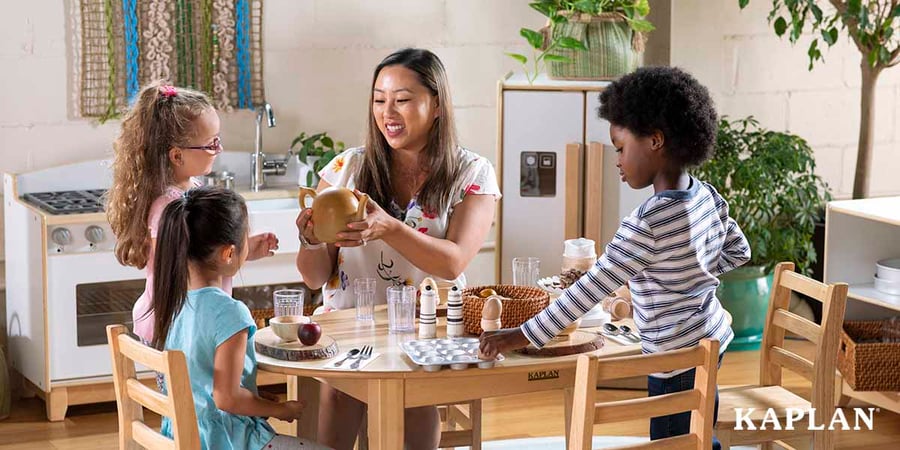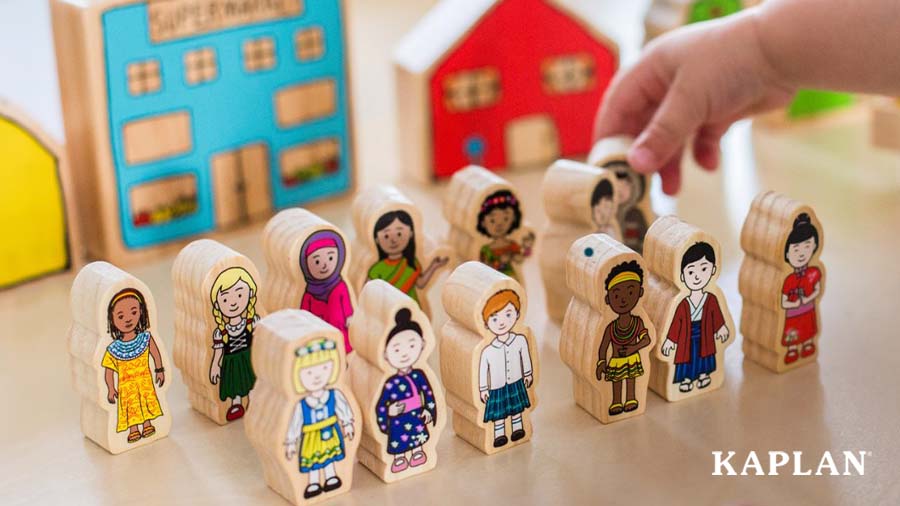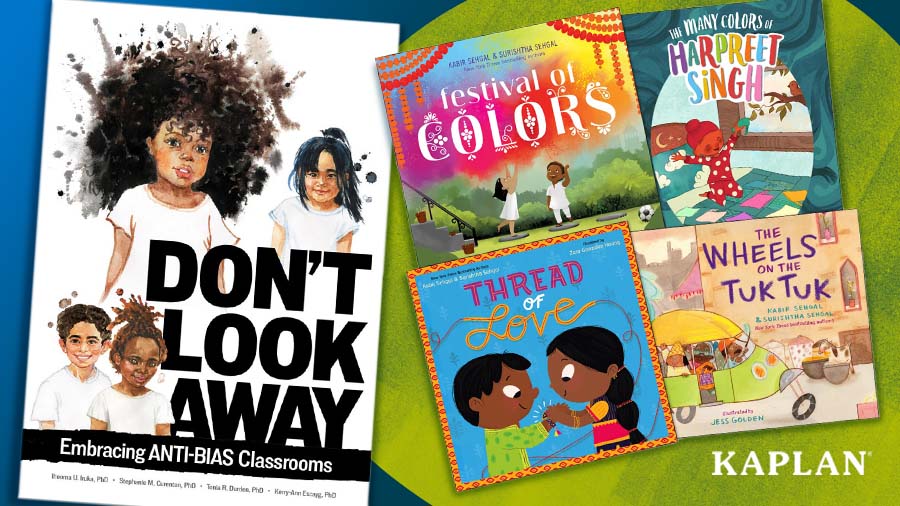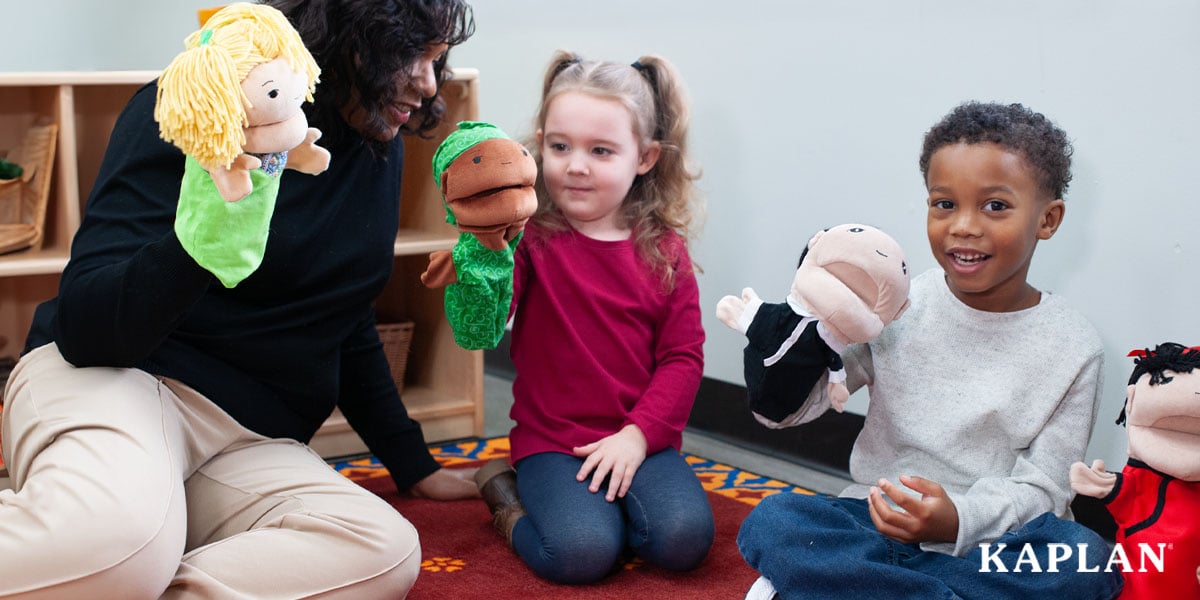The early years of life are the most critical for child development. During these years, children develop language, self-regulation, cognition, physical movement, morals, and self-identity. This is also a time when trauma caused by adverse life events, including the stresses of racism, sexism, and cultural bias, can have significant consequences that last for years to come.
While children may not outwardly show or verbalize how they are affected by this type of trauma, this doesn't lessen the impacts of racism, discrimination, and cultural biases that affect those belonging to a marginalized group.
As an early childhood professional, you play a crucial role in alleviating these hardships so all children can learn, grow, and reach their full potential. Which is why practicing culturally relevant teaching is so important. By embracing this educational pedagogy or teaching practice, you ensure that the children you are responsible for nurturing and educating see themselves as capable, meaningful, and respected members of society.
Diversity, Equity, and Inclusion are at the forefront of everything we do here at Kaplan. We work closely with early childhood experts to create resources and classroom materials that support children and families of all backgrounds and experiences.
If you are curious about culturally relevant teaching, keep reading. In this article, you will learn what "culturally relevant teaching" means, why it matters, and ways to incorporate this educational pedagogy into the early childhood classroom.
What is culturally relevant teaching?
Culturally relevant teaching is an educational practice that focuses on classroom instruction that embraces the culture, race, religion, gender identity, perspectives, and experiences of every child. This teaching pedagogy improves children's academic and personal success as individuals and as a collective group.
By practicing this teaching style, you provide children with tools that uphold their uniqueness and self-identity, allowing each child to reach their full potential inside and outside the classroom.

Why does culturally relevant teaching matter?
According to the U.S. Department of Education, children of color now make up the majority of public school students enrolled in prekindergarten through twelfth grade. Yet even with increasing diversity in schools, unconscious biases and prejudices are still prevalent in classrooms today.
Based on a system that punishes and hinders children of color more often than white children, our society is the reason these unconscious biases exist. Society has also programmed the human mind in a way that even if we are not explicitly biased or racist toward those who are different from ourselves, our minds unconsciously create negative responses toward them anyway.
Unconscious biases in the classroom are what lead to actions and interactions with children that perpetuate the -isms we see in society, such as racism, sexism, ageism, classism, etc.
When negative and harmful biases exist in the classroom, children are at a disadvantage. They may not have a nurturing and supportive relationship with their teacher, making them feel less welcome and confident in the classroom. They may not receive the educational experiences they need to flourish, resulting in lower cognitive growth than their peers. They may have difficulty connecting with peers, leading to loneliness and social isolation.
By becoming a culturally relevant teacher, you create a classroom environment that honors and recognizes every child, their family, and their culture. In doing so, you show the children in your classroom that they are accepted, have a voice worth hearing, and that they play an essential role in society. Not only that, you help shape children's perceptions of each other, establishing a more positive view of different races, ethnicities, and backgrounds.
What is the first step to being a culturally relevant teacher?
Some early childhood professionals may struggle with teaching children who speak a different language than they are used to, have different cultural beliefs, have a non-conventional family dynamic, etc. Early childhood professionals must embrace culturally relevant teaching to lay the foundations for future educational success: positive teacher-child relationships.The first step to becoming a culturally relevant teacher is understanding and confronting bias and prejudice. This is a process that takes time and constant effort to accomplish and will be an ongoing process. Culturally relevant teaching also requires changing your beliefs about children, their families, and how you approach education. As a culturally relevant teacher, you should believe in the following:
- All students can succeed
- Teaching is like pulling or mining knowledge instead of putting knowledge in a bank
- Learning is social and cultural
- Excellence is a complex standard that takes student diversity and individual differences into account
- Educating should be equitable
- Engaging with families and other professionals should be a collaborative experience
It is one thing to practice culturally relevant teaching. It is another to BE culturally relevant and take ownership of the changes you must make to embrace this teaching pedagogy fully. In the book Don't Look Away: Embracing Anti-Bias Classrooms, you will find even more research-based information and practical strategies to help you become more culturally relevant so you can fully support and educate every child in your care.

What does culturally relevant teaching look like in the classroom?
As you look around your classroom, imagine you are seeing the space through the eyes of the children you teach. Do you see books, toys, materials, artwork, or images that look like you, your family, your cultural practices, or your community? Do you hear songs or people speaking in your home language? Now, think about how your classroom represents your community and society. Are there images, books, or toys that represent non-stereotypical depictions of women, men, people of color, individuals with exceptionalities, etc?
For young children, representation matters. Embracing culturally relevant teaching requires you to establish positive connections with the children in your care by ensuring your classroom environment promotes positive viewpoints and normalizes the diversity within our society and world. You can do this by giving children access to:
- Multicultural books that share stories from different cultures and experiences
- Learning Center toys that depict people of varying abilities
- Puzzles that represent diverse community members and career roles
- Classroom posters that depict diverse family structures
You can take this approach one step further by making your lessons and activities culturally relevant.
For example, say you read a book depicting a "family" (dad, mom, brother, sister) living in a two-story house on a suburban street. This image is not a typical way of life for everyone. To be more culturally relevant, you can share examples of various homes, family dynamics, living situations, communities, etc., with which the children in your classroom will resonate. By doing so, you uplift those differences and show the children that even though they may look different, all families are the same. 
Ready to get started with culturally relevant teaching?
While the strategies above may sound easy to incorporate, it takes time, commitment, and honesty to unpack the lifelong biases and prejudices that are within all of us. This is the only way we can truly rid ourselves of the unconscious thoughts that continue to perpetuate the -isms that harm young children and affect their future development and life.
If you want to make a difference in how you teach young children but need help figuring out how to get started, the book Don't Look Away: Embracing Anti-Bias Classrooms and We Are the Change We Seek: Advancing Racial Justice in Early Care and Education can help. Written by early childhood experts and founded on research, this book strives to support early childhood professionals in their quest to enhance the classroom environments and education they provide for young children.
Read the articles in the "Dear Culturally Relevant Teacher" series, written by early childhood expert Tonia Durden, Ph.D., for even more resources on culturally relevant teaching.

